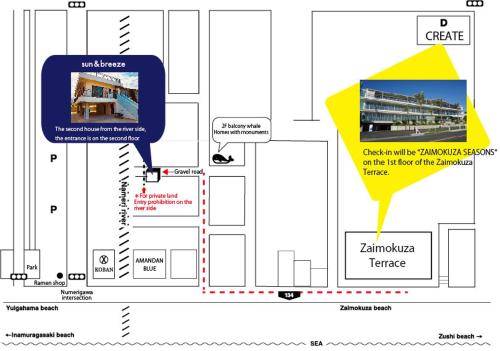Hase-dera Temple
menuMenu
A temple harmoniously blending history and nature, perched on a hilltop offering sweeping views of Kamakura.






Highlights
- One of Kamakura's most prestigious temples
- Houses the Eleven-faced Kannon Bodhisattva, one of Japan's largest wooden Buddhist statues
- Hilltop location offering panoramic views of Kamakura
- Stunning seasonal scenery
- Approximately 2,500 hydrangeas in full bloom
Basic Information
- Address
- 3-11-2 Hase, Kamakura-shi, Kanagawa-ken Search for tourist attractions in Kanagawa
- Access
- 5-minute walk from Hase Station on the Enoden (Enoshima Electric Railway). Alternatively, take a bus from Kamakura Station or Ofuna Station to "Hase Kannon," then it's a 3-minute walk. Show route
- Op.Hours
- March - September 8:00 AM - 5:00 PM (Gate closes at 5:30 PM) October - February 8:00 AM - 4:30 PM (Gate closes at 5:00 PM)
- Cld.Days
- Open every day
- Fee
- Admission Fee: Adults: ¥400, Elementary school students: ¥200 Kannon Museum: 9:00 AM - 4:30 PM Adults: ¥300, Elementary school students: ¥150 (Separate entrance fee required in addition to the admission fee)
- INFO
- Suica (and other compatible IC cards) can be used to purchase admission tickets.
Overview
Recommended nearby attractions
Meigetsuin Temple

Experience the breathtaking view from the iconic "Window of Enlightenment," offering stunning seasonal scenery. June's hydrangea display is particularly spectacular!
Hase-dera Temple (Iizuka Kannon)

A historic temple dating back to the Kamakura period, offering beautiful seasonal flowers. Especially stunning are the cherry blossoms in spring and hydrangeas in early summer.
Engaku-ji Temple

A historic Zen temple counted among the Five Great Zen Temples of Kamakura. Its expansive grounds boast numerous highlights, including a National Treasure reliquary hall, a majestic mountain gate, and serene bamboo groves.
Jomyoji Temple

Ranked fifth among the Gozan (five great Zen temples) of Kamakura, Jomyoji Temple captivates with its serene and beautiful garden and historically significant main hall. It also houses a statue of the goddess Ajima Myojin, believed to be efficacious for women's health issues.
Houkokuji Temple

A Zen temple with a bamboo grove where you can experience the tranquility of Kamakura. Why not take a stroll through the lush bamboo forest and spend a relaxing time?
Kamakura Great Buddha (Kotoku-in Temple)

The Great Buddha of Kamakura, a symbol of the city, stands approximately 11.3 meters tall. Its imposing presence and rich history make it a must-see attraction.
Chōkōzan Shaotaiji Temple

A temple of the Obaku sect, founded by Inaba Masanori, the lord of Odawara Castle, and built by the Obaku priest Tetsugo Doki.
Jochi-ji Temple

Jochi-ji Temple, one of the five great Zen temples of Kamakura, is a temple with ties to the Hojo clan of the Kamakura Shogunate. Explore a tranquil space steeped in history, stroll through beautiful gardens dating back to the Kamakura period, and admire precious Buddhist statues.
Kamakura-gu Shrine

This shrine enshrines Minamoto no Yoritomo, the first shogun of the Kamakura Shogunate, and has been revered as the guardian deity of the shogunate.
Jojuin Temple

A temple where you can enjoy panoramic views of Kamakura's cityscape and seasonal flowers. Famous as a hydrangea temple, it now also boasts a stunning display of bush clover, creating a picturesque scene.
Nearby Hotels
古民家の宿 鎌倉楽庵

Iza Kamakura Guest House and Bar

SYMPOSION Locanda

Wanderlust Inn

Villa Kamakura

Guest House Kamakura Zen-ji

Diamond Kamakura Bettei Society

WeBase Kamakura

Plage Yuigahama

一棟貸しの海宿 Kamakura SUN&BREEZE

